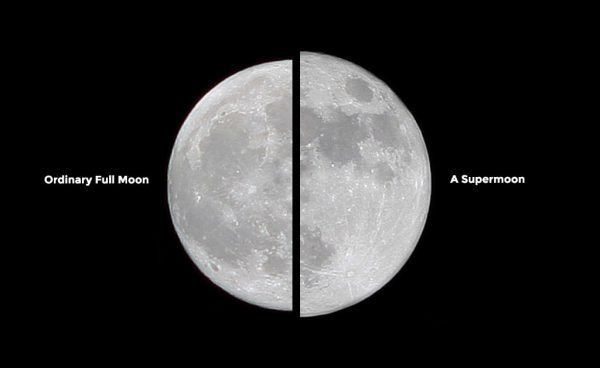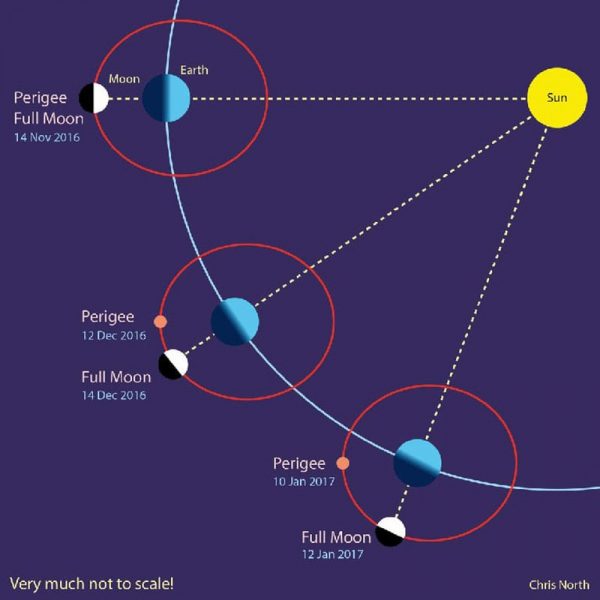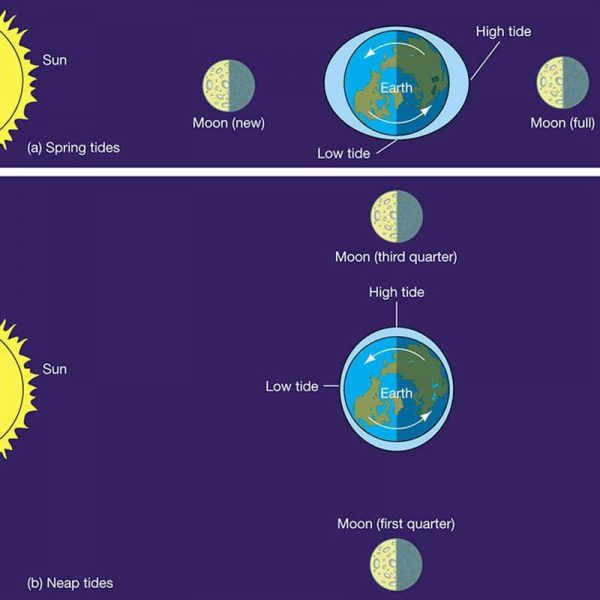
While there are usually 4 to 6 Supermoons in a year on average, this month’s Supermoon will be the biggest and brightest in 68 years. The moon won’t come this close again until the Full Moon on the 25th of November, 2034.
So, what is a Supermoon you may be asking? Well, you might have guessed it’s not the Moon in a Superman costume. The term Supermoon was originally coined by Astrologer Richard Nolle over 30 years ago, but it became a familiar label in 2011 when the media used it to describe the full moon on the 19th of March, 2011. Beforehand we old-timers would just call this event a perigee full moon, or a perigee new moon. Perigee just meaning “near-Earth”.

A Supermoon is when you have a new or full moon which occurs within 90% of the Moon’s closest approach to the Earth. The Moon orbit is not perfectly circular and is slightly egged shaped with its furthest point away from the Earth called Apogee, and its closest point called Perigee. The Moons average distance from the Earth is 384,400 kilometres but this month’s Supermoon will only be 356,509 kilometres away from the Earth. This means the Moon will appear around 14% bigger and 30% brighter than usual.
All Full Moons and New Moons combine with the sun to create larger-than-usual tides, but this and other Supermoons won’t help the high tides to cause flooding unless it coincides with a strong storm system. The next Supermoon will be on the 14th of December at 8:05 am, which means Perth will miss out on seeing the Moon at its closest point, but it’ll still look very close during the night before, which also happens to be the peak night for this year’s Geminids meteor shower.

Originally posted as a So Perth article: Perth Supermoon Monday 14th of November.





